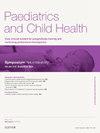Understanding and helping children who have experienced maltreatment
Q3 Medicine
引用次数: 0
Abstract
Children who experience maltreatment from within their families can suffer trauma that is devastating to their physical and psychological development. The label developmental trauma has developed to describe this trauma and to guide diagnosis. The impact of this can increase when children live within marginalized communities or when their family is impacted by intergenerational trauma. The definition of developmental trauma has been expanded to describe seven domains of impairment. Together these help the clinician to provide a formulation of a child's difficulties which avoids multiple diagnoses and can guide treatment planning. Dyadic Developmental Psychotherapy and Practice (DDP) is an intervention model that can meet the therapeutic needs of the children alongside the support needs of parents and practitioners caring for them. The attitude of PACE (playfulness, acceptance, curiosity and empathy) is central within DDP interventions, used by therapists, parents and practitioners who together make up the network around the child. Tailoring DDP interventions can be guided by a pyramid of need developed by the author. This helps clinicians develop flexible intervention packages tailored to the needs of the child, family and practitioner. Within the article these ideas are explored illustrated by the fictional example of Janice. She was maltreated in early childhood and now lives in foster care with Mary and Simeon.
了解并帮助遭受虐待的儿童
遭受家庭虐待的儿童可能会遭受对其身心发展具有毁灭性的创伤。发育性创伤这一标签就是用来描述这种创伤和指导诊断的。如果儿童生活在被边缘化的社区,或者他们的家庭受到代际创伤的影响,这种创伤的影响就会加剧。发育性创伤的定义已扩展到七个损伤领域。这些领域共同帮助临床医生对儿童的困难进行表述,从而避免多重诊断,并指导治疗计划。发展心理治疗与实践(Dyadic Developmental Psychotherapy and Practice,DDP)是一种干预模式,可以满足儿童的治疗需求,同时也能满足家长和照顾儿童的从业人员的支持需求。PACE(玩乐、接纳、好奇和同理心)态度是 DDP 干预的核心,由治疗师、家长和从业人员共同组成儿童周围的网络。作者开发的需求金字塔可以为定制 DDP 干预措施提供指导。这有助于临床医生根据儿童、家庭和从业人员的需求制定灵活的干预方案。文章以珍妮丝(Janice)为例,对这些观点进行了探讨。她在幼年时受到虐待,现在与玛丽和西蒙一起生活在寄养家庭中。
本文章由计算机程序翻译,如有差异,请以英文原文为准。
求助全文
约1分钟内获得全文
求助全文
来源期刊

Paediatrics and Child Health (United Kingdom)
Medicine-Pediatrics, Perinatology and Child Health
CiteScore
1.20
自引率
0.00%
发文量
70
 求助内容:
求助内容: 应助结果提醒方式:
应助结果提醒方式:


